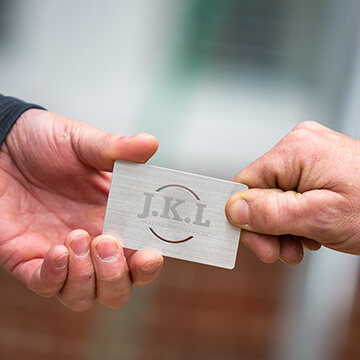Scaffolding is a crucial component in construction, maintenance, and renovation projects. Whether for a residential, commercial, or industrial project, scaffolding provides safe and efficient access to high and complex areas.
However, the time required to erect scaffolding can vary significantly. It depends on the project’s scope, complexity, and specific requirements. In this blog, we’ll discuss this in detail while shedding light on various factors that impact the time. You can also speak to our scaffolding experts directly. We waste no time when it comes to erecting your scaffolds. Call 0800 061 4800 or email info@jklscaffolding.co.uk today to make enquiries.
To buy or hire quality scaffolds for your project, trust our reliable team at JKL Scaffolding. We’ll help with expert advice, tailored scaffolding, and prompt setup.
How Long Does It Take To Erect Scaffolding?
1. Domestic Projects
For residential projects, such as painting a house or repairing the roof, scaffolding erection typically takes between one and two days. Factors such as the height of the building, the extent of work, and ease of access can influence this timeframe.
Small homes or single-story buildings might be completed in less than a day.
2. Commercial Projects
Commercial scaffolding projects, like those for office buildings or retail spaces, can take anywhere from two to five days. The larger the structure and the more intricate the work required, the longer it will take. Additional considerations include pedestrian and traffic management, especially in busy areas.
3. Industrial Projects
For industrial projects, such as factories or large warehouses, scaffolding erection can take up to two weeks or more. The size of the structure, the complexity of the industrial environment, and safety regulations all play a significant role in determining the duration. When considering the scaffolding cost, industrial projects typically require a more substantial investment due to the complexity and scale of the work.
Factors Affecting Scaffolding Erection Time
1. Project Size And Complexity
The size and complexity of the project are primary factors in determining scaffolding erection time. Larger structures, like multi-story buildings, require more extensive scaffolding, increasing setup time.
Complex designs or intricate architectural features necessitate custom scaffolding solutions for construction projects, which are time-consuming to plan and assemble.
Since detailed coordination and precise execution are crucial to ensure stability and safety in large or complex projects, they often extend the overall time required.
2. Location And Access
The location and ease of access to the site significantly impact scaffolding erection time. Sites in congested urban areas or those with restricted access can pose logistical challenges. This slows down the delivery and assembly of scaffolding materials.
Additionally, working around existing structures, dealing with narrow passageways, and ensuring minimal disruption to the surrounding environment all contribute to longer erection times.
3. Weather Conditions
Weather conditions play a vital role in scaffolding erection times. Adverse weather, such as heavy rain, strong winds, or extreme temperatures, can delay work due to safety concerns and reduced worker productivity.
Wet or icy conditions can make surfaces slippery. It increases the risk of accidents and slows down the erection process. Proper planning and weather forecasts are essential to mitigate these delays and ensure timely completion.
4. Regulatory Compliance
Strict adherence to safety standards requires thorough inspections and potential adjustments to meet regulatory requirements. This involves additional time for safety checks, securing permits, and implementing necessary safety measures, such as guardrails and toe boards.
Meeting these standards is crucial to protect workers and ensure legal compliance, impacting the overall timeframe.
5. Site Preparation
Effective site preparation is crucial for efficient scaffolding erection. Preparing a stable and level foundation involves clearing obstacles, grading the ground, and installing base plates or screw jacks. Any delays or complications in this initial phase can impact the overall timeline.
6. Crew Experience And Expertise
Skilled and well-trained workers can assemble scaffolding more efficiently, ensuring stability and safety with minimal delays. They can quickly adapt to unforeseen challenges, make on-the-spot decisions, and maintain high productivity levels.
Hiring a proficient crew not only shortens erection time but also ensures the quality and reliability of the scaffolding structure.
Contact JKL Scaffolding
Steps To Erect Scaffolding
1. Site Assessment And Planning
The first step in erecting scaffolding involves a thorough site assessment and detailed planning. Your chosen scaffolding team will assess the site for potential hazards, such as uneven ground, overhead power lines, or restricted access.
They will develop a scaffolding plan tailored to the project’s specific requirements, ensuring it meets all safety and regulatory standards. This step is crucial for identifying potential challenges and devising solutions to ensure a smooth and safe erection process.
2. Foundation Preparation
Next, the professionals will prepare the site by clearing debris and ensuring the ground is level. They will ideally use base plates or screw jacks to provide a solid footing, especially on uneven terrain.
Proper foundation preparation prevents shifts and tilts and enhances the structure’s overall stability.
3. Assembling The Scaffold Frame
Your scaffold erectors will then assemble the scaffold by constructing the base section first. They will securely connect the vertical and horizontal components and work upwards systematically, adding sections and bracing them for added support.
4. Adding Platforms And Guardrails
Once the frame is erected, the next step is to install the platforms at the required working heights. Ensure the platforms are securely fixed and level. Professionals will add guardrails, mid-rails, and toe boards to prevent falls and enhance safety. These components are vital for worker protection and must be installed correctly.
5. Safety Check
The scaffolding company will conduct a thorough inspection of the completed scaffolding to ensure all components are securely in place and meet safety standards. They will check for any loose connections, ensure guardrails and toe boards are correctly installed, and verify that the structure is stable.
This final safety check is crucial to identify and rectify any potential issues before the scaffold is used. Ensuring the scaffolding is safe for workers prevents accidents and complies with regulations.
Speak To The Experts At JKL Scaffolding
At JKL Scaffolding, our expert team sets the standard for professional scaffold solutions across Kent and South London. We specialise in bespoke scaffolding services tailored to domestic, commercial, and industrial projects.
We understand that time is money, and our efficient processes ensure that scaffolding is erected and dismantled with precision, keeping your project on schedule. With us, you can expect reliability, safety, and top-notch service right from start to finish.
Speak to us today and discuss your requirements. We’ll ensure prompt and efficient scaffold erection. Call 0800 061 4800.
Conclusion
Erecting scaffolding is a meticulous process that requires expertise and careful planning. The time required varies based on project size, complexity, and specific site conditions.
For professional, timely, and safe scaffolding solutions in Kent, JKL Scaffolding stands ready to assist. Contact us today to discuss your project needs.
Here are a couple of blogs you’ll find equally helpful:
How Much Does It Cost To Hire The Best Scaffolding Company In The UK
Common Scaffolding Mistakes To Avoid When Using: A Comprehensive Guide



